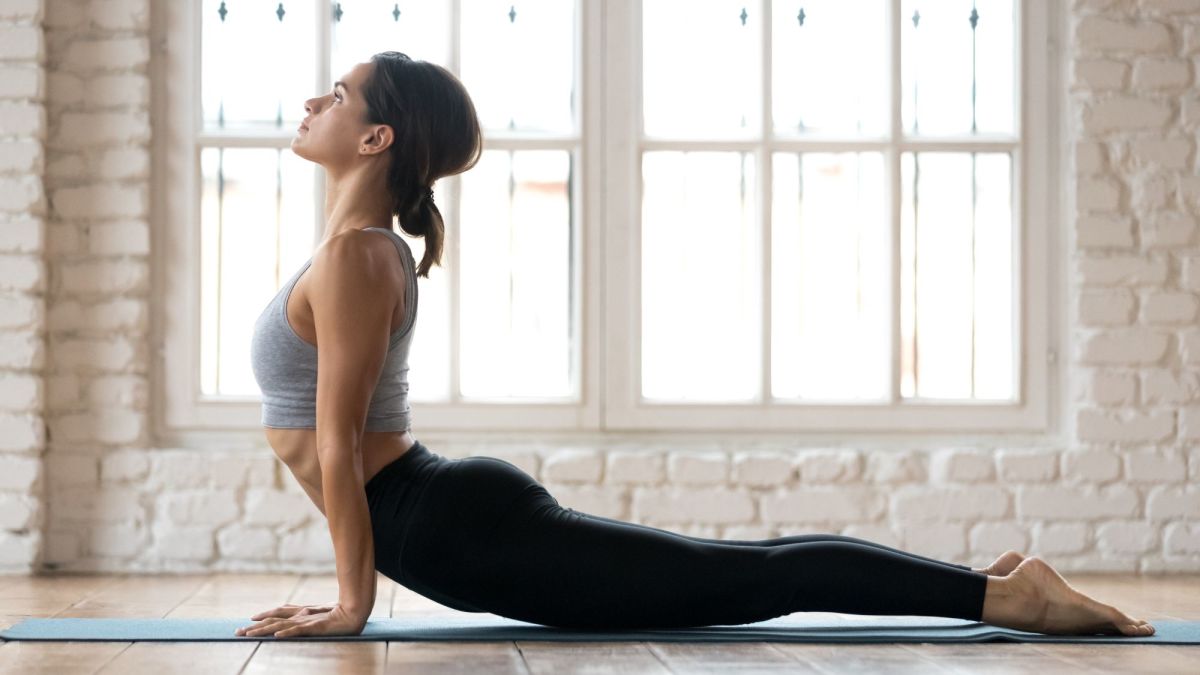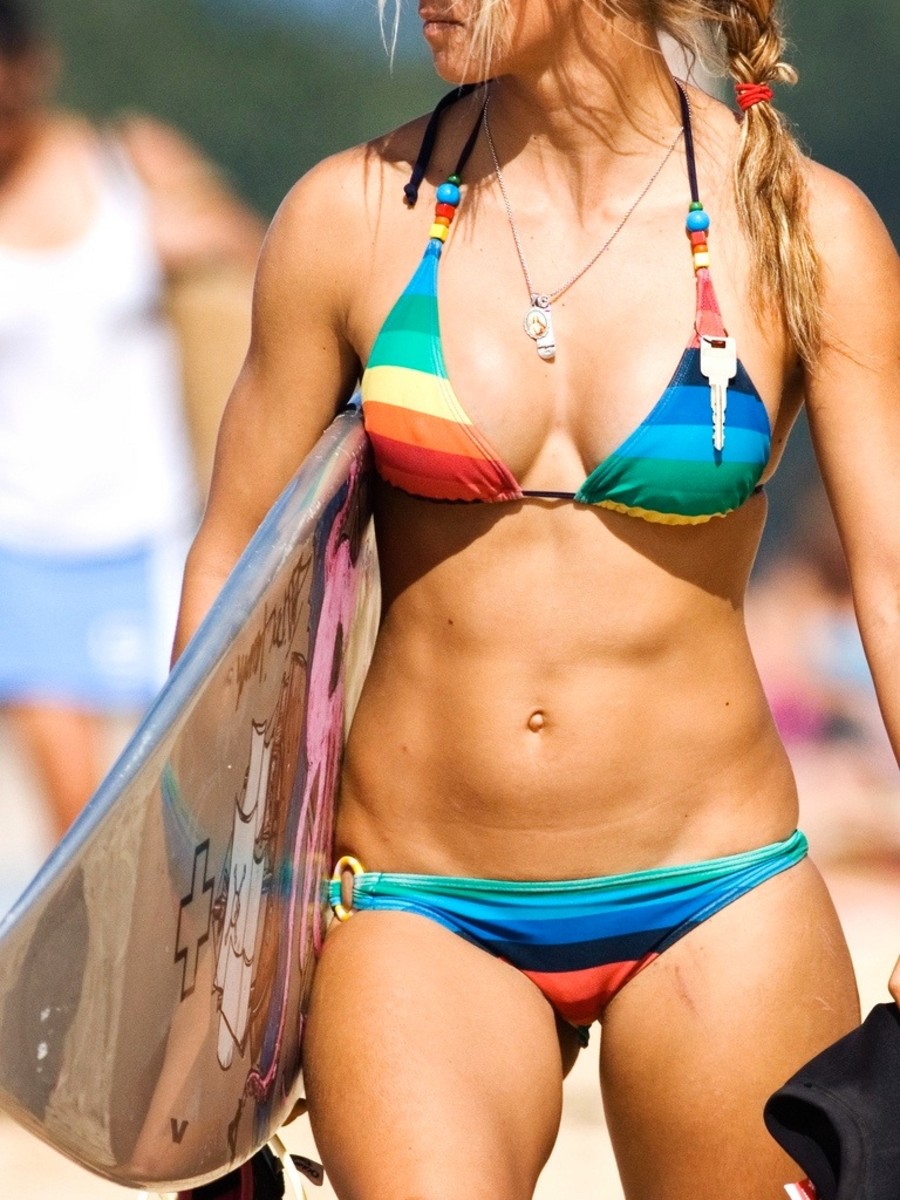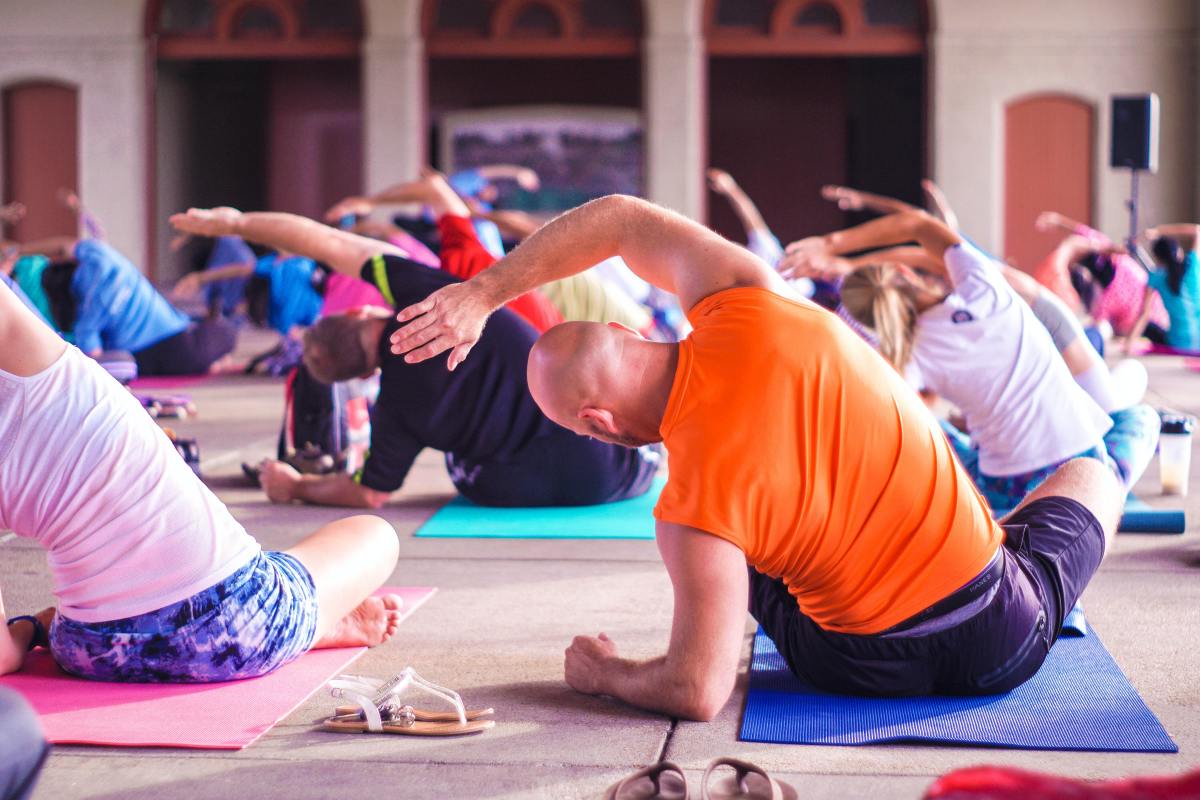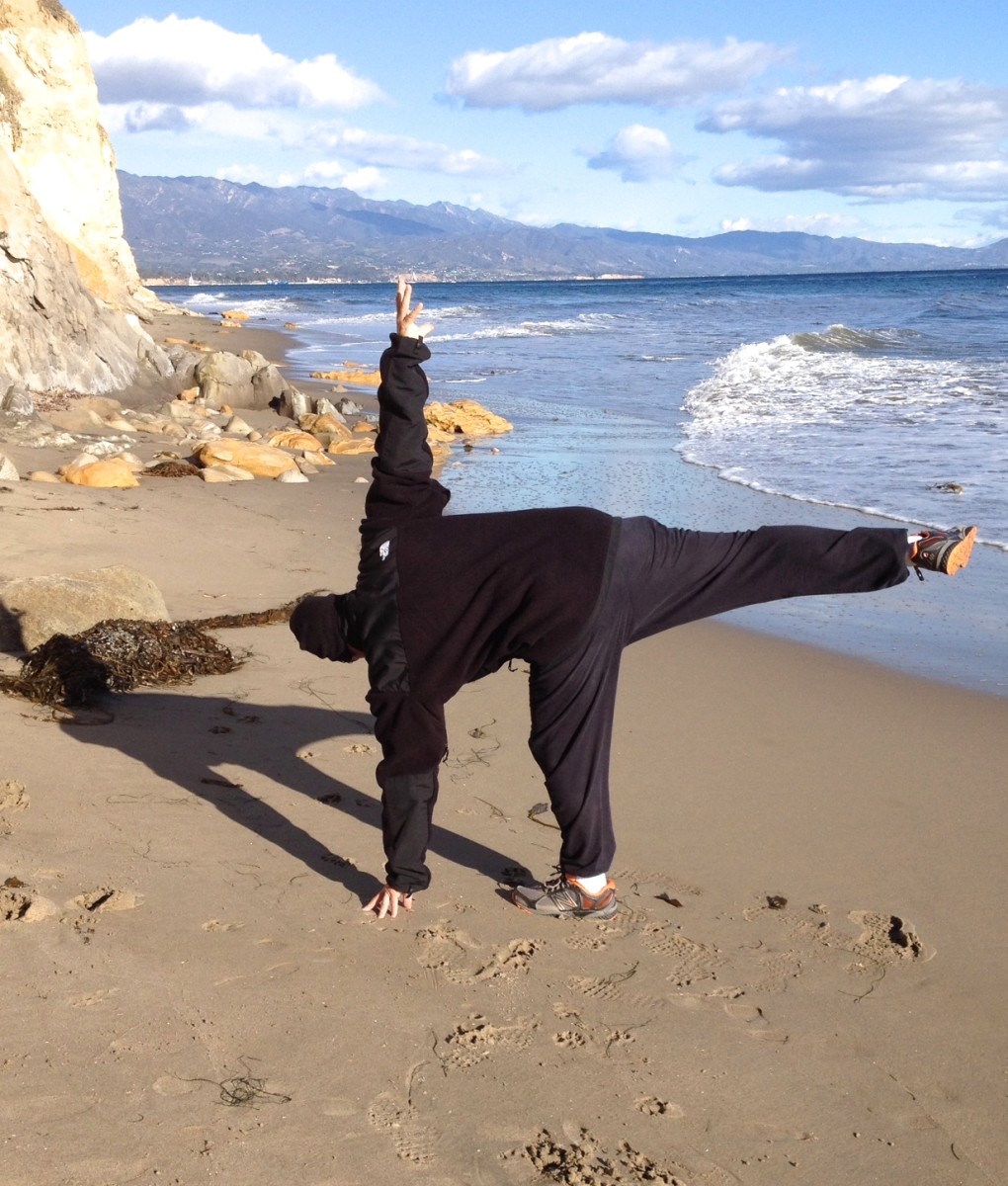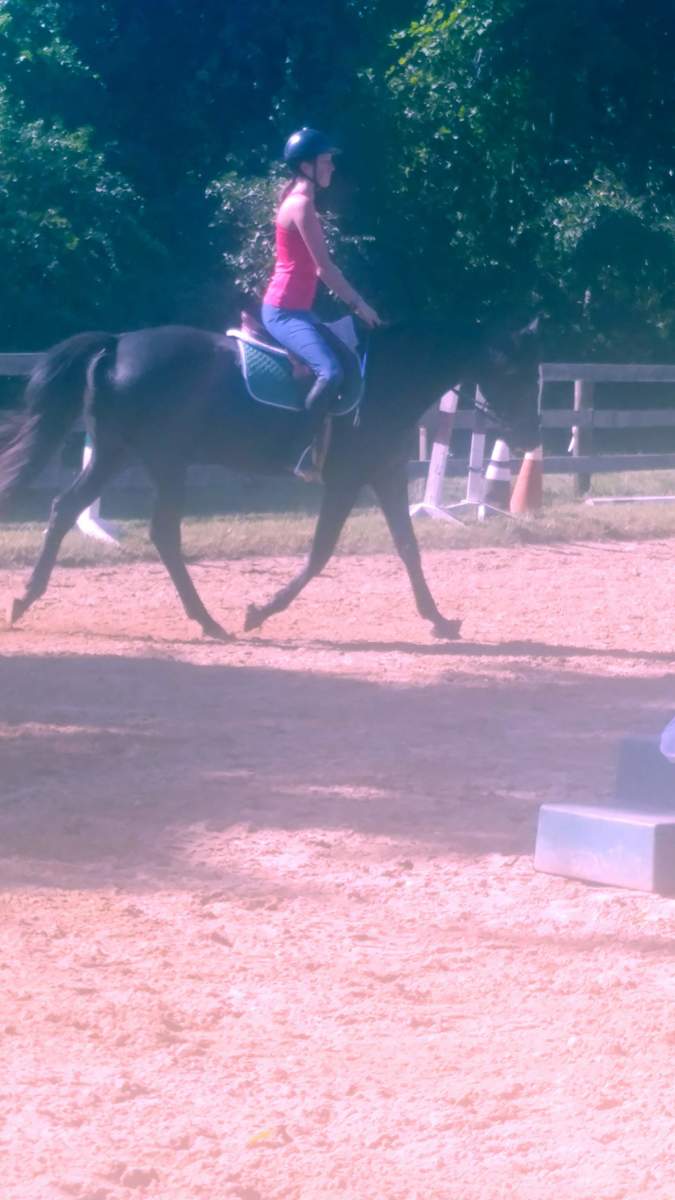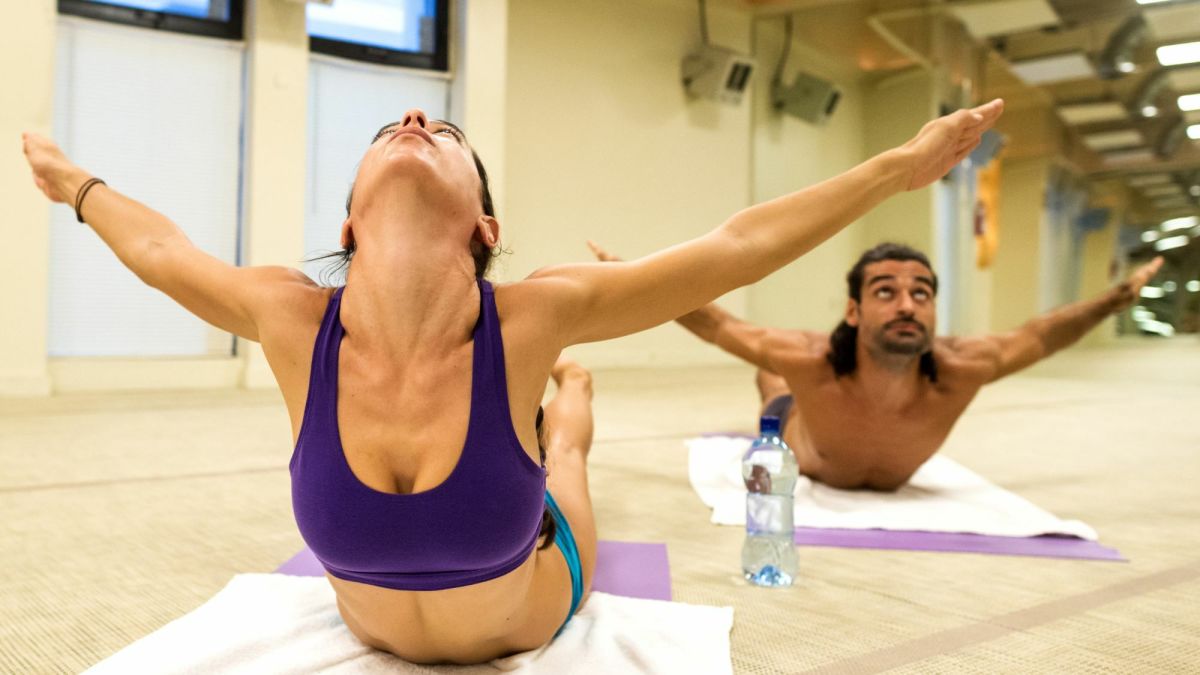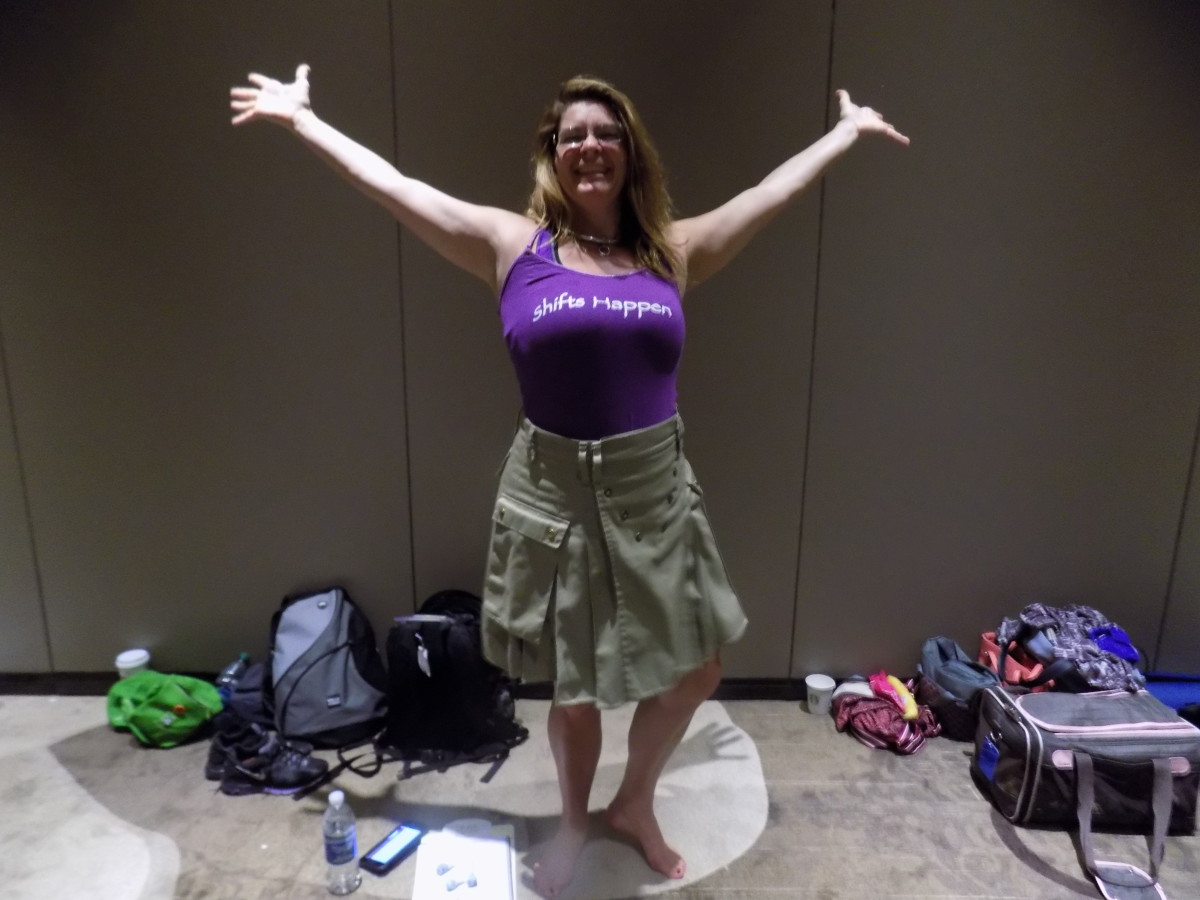Yoga Basics: How to Do a Vinyasa Flow
What is a Vinyasa?
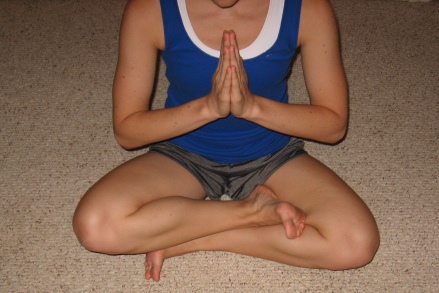
A vinyasa is a flowing sequence of yoga poses often used to transition to one section of a yoga routine to another. Vinyasa is a Sanskrit word that is translated “to place in a special way.” This is exactly what the vinyasa does – it is deliberately creating a flowing mechanism in your body. Vinyasa is also used to describe a style of flowing yoga that uses the vinyasas consistently to transition from one asana (posture) to the next. Because it is often repeatedly used during many yoga classes, it is important to have an understanding of the vinyasa and the proper form so you can get the most out of your yoga practice.
Vinyasa Poses
Pose
| Sanscrit Name
|
|---|---|
Mountain
| Tadasana
|
Forward Bend
| Uttanasana
|
Four-Limbed Staff
| Chaturanga Dandasana
|
Upward-Facing Dog
| Urdhva Mukha Svanasana
|
Downward-Facing Dog
| Adho Mukha Svanasana
|
Warrior
| Virabhadrasana
|
These are the major poses used in a vinyasa flow.
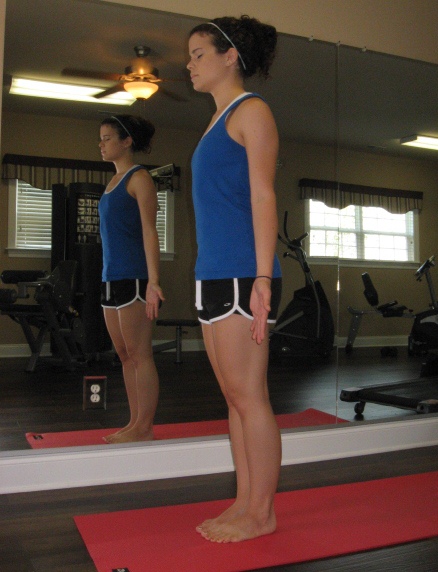
Vinyasas are often used to link poses like the warrior poses, with a vinyasa between each side of the warrior pose. It adds more fluidity to the yoga routine and also encourages more focus on your body and breath.
Begin a vinyasa flow in mountain pose (Tadasana). This is your opportunity to focus your mind and prepare for your yoga practice. If you want, you can close your eyes to minimize distractions. Breathe deeply and slowly, focusing on filling your lungs all the way to the bottom. If your belly moves out when you breathe this way, you are doing it correctly! Avoid raising the shoulders during breathing. Make sure you are well-grounded in your feet, and imagine that a string is tied to the top of your head pulling you up straight and tall. Your feet should be parallel and together. Your gaze (drishti) should be straight forward.
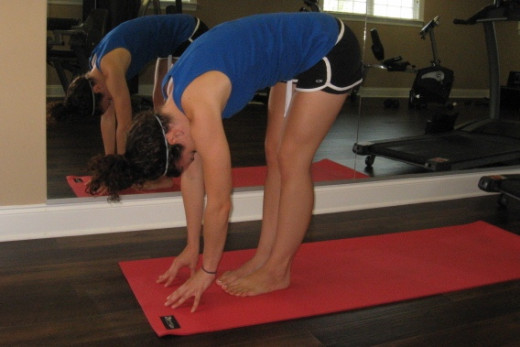
Inhale and bring your arms overhead. Remain relaxed in your shoulders. Bring your arms out to the side to prepare for a forward swan dive. Exhale and bend forward, keeping your back as straight as possible.
Now you will be in a forward bend pose (Uttanasana). If you are very flexible, you can fold yourself completely and hug your legs. If you are able to do this, your belly should be touching your thighs. Other variations include placing your hands or fingertips on the floor, placing your hands on your calves, or using a yoga block to bring the floor closer to you. Keep your knees straight, but not locked. Your feet should be rooted in the ground, and your gaze should be at your shins or eyes closed.
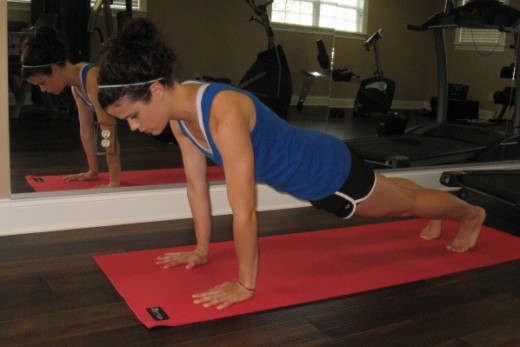
Inhale and lengthen your spine so that your back is straight and flat. If you are flexible, you can do this with your hands flat on the floor. Other variations include using yoga blocks, placing your fingertips on the floor, or supporting your back with your hands on your shins.
Place your hands flat on the floor at about shoulder width, and step or jump your feet back into a plank position. Your hands should be directly below your shoulders. Keep your body supported and in a straight line. Your weight should be on your hands and toes.
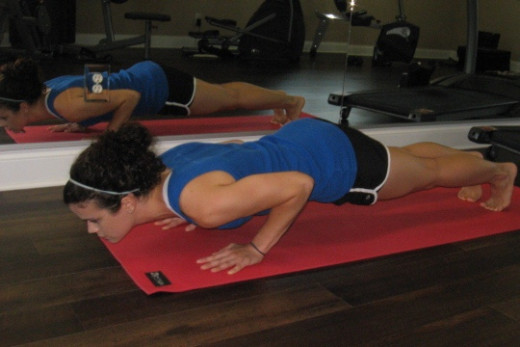
While keeping your body straight, exhale, bend your elbows and lower yourself down into four-limbed staff (Chaturanga). This position is like the lower part of a push up. Your elbows should be close to your body, and your forearms should be parallel with your body. Do not lower your shoulders past the level of your elbows. A variation for beginners is to lower the knees to the floor. Your gaze should be at the floor to keep the spine in a straight line. Hold this position for a few breaths.
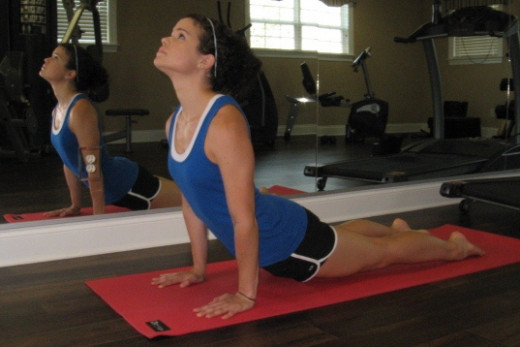
Lower your body to the floor. With your upper arms parallel to the ground and your elbows at a right angle, push your body up, arch your back and look upward into upward-facing dog (Urdhva Mukha Svanasana). Draw your shoulder blades together, toward the center of your back. Lengthen your neck and avoid shrugging your shoulders. Straighten your arms and engage your leg muscles so you can lift your thighs off the floor. In this version, only your hands and tops of your feet should be touching the ground. A gentle variation is to leave the thighs on the ground. Your gaze should be upward or straight ahead.
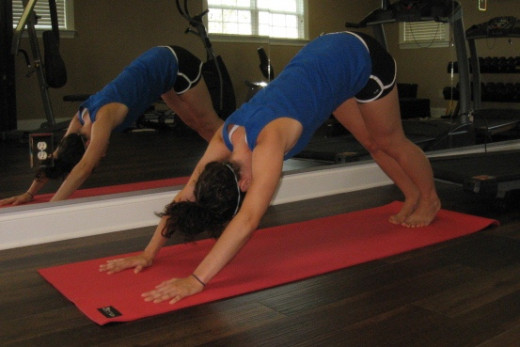
Briefly come back into a plank pose, and without moving your hands or feet, exhale and push back into downward-facing dog (Adho Mukha Svanasana). For most people, the hardest part of this pose is getting inside the shoulders enough so that the upper body makes a straight line from the hands to the hips. To help keep your arms straight, focus more of your weight onto the inner part of your hands (toward the pointer finger and thumb). Your hands should be firmly rooted with the pointer fingers facing straight ahead. After your upper body is straight, then focus on straightening the lower body so your body forms a triangle. Work on lowering your heels to the floor. Move your hips up toward the ceiling and move your heart toward the ground. A gentle version is to leave the knees slightly bent with the heels off the floor. Your gaze should be at the floor or toward your feet.
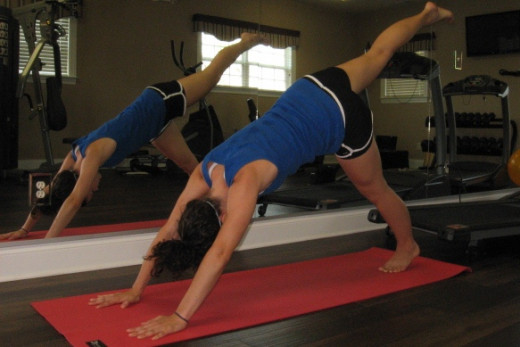
Lift your right leg straight up and in line with your upper body. Swing it through and move the foot in between your hands for runner’s pose or lunge. Your right leg should be bent at the knee in a 90 degree angle, you should be leaning forward, and your fingertips should touch the floor. Your back left foot should be on the toes with the heel up.
This completes the basic vinyasa flow that is used between each pose. From here, you can do things like the warrior poses with the vinyasa as a transition on each side.
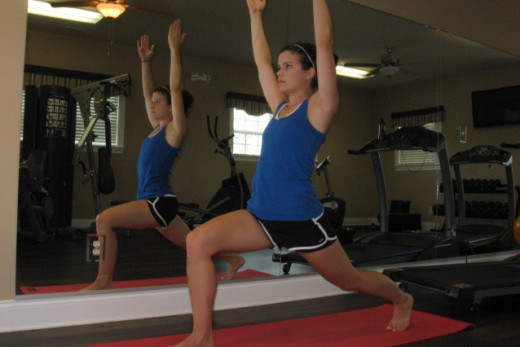
Lower your back heel to the ground so your foot is at about a 45 degree angle. Extend both arms straight up into warrior I (Virabhadrasana I). Your front leg should remain at a 90 degree angle, with your knee directly above your ankle. Your hips should be squared and facing straight forward. Your gaze should be straight ahead or upward. Hold this pose for a few breaths.
To repeat warrior I on the other side, lower your hands down and move your right leg back to the plank pose. Lower your body into four-limbed staff (Chaturanga) again, and pull through to upward-facing dog. Push back into downward-facing dog, lift the left leg straight up, and move it through to warrior I. Now you have used the vinyasa sequence to move to the warrior pose on both sides. You can use this vinyasa flow between many standing postures, balancing postures, and forward-bending postures to create your own flowing yoga routine!
Try this Sun Salutation:
See Also:
- Protecting Your Knees during Exercise
This article reviews the techniques for proper form during different types of exercise. The exercises reviewed include running, impact exercise, lower body exercise, squats and lunges, yoga, and stretching.

